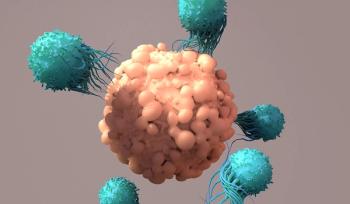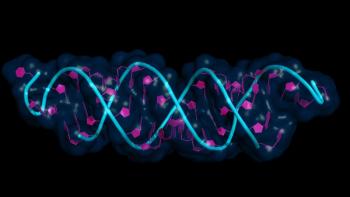
- BioPharm International-07-01-2018
- Volume 31
- Issue 7
Protecting Biopharm’s Intellectual Capital
Safeguarding the know-how behind biopharmaceutical innovation is crucial to the industry’s future, but, in the US, some argue it is becoming increasingly difficult to do.
In 30 years, the biopharmaceutical industry has moved light years away from its beginnings in the 1980s, when products such as the first alpha interferons represented the state of the art. Today’s biopharmaceutical products include monoclonal antibodies (mAbs), immunotherapies such as chimeric antigen receptor T-cell (CAR-T) therapies, and a range of products whose mechanisms of action might have been seen as science fiction when this magazine was first introduced.
One of the enablers of change was the US Supreme Court’s decision in Diamond v. Chakrabarty in 1980 (1). Focusing on genetically modified organisms used in the petrochemical industry, the Supreme Court’s ruling allowed genetically altered cells and their products to be patented. The decision ushered in a flood of new biotechnology patents and products, permitting development of the first biopharma blockbuster drugs.
Since then, biotechnology has moved far beyond its roots in genetically-modified organisms, with new therapies based on genomics and personalized medicine. Scientific advances challenge manufacturers to develop strategies to protect innovation that took them years and millions of dollars to develop, and the judicial and legislative system to ensure that the best treatments are available to patients.
Adding to the pressure are the demands of value-based medicine and the need to reduce drug costs, which are driving biosimilars development. At the same time, the trend to increased outsourcing and collaborative R&D can complicate licensing, intensifying questions of intellectual property (IP) ownership and the need to protect trade secrets. This article touches on some recent developments and trends and considers their potential impact.
Currently, therapeutic antibodies account for much of the biosimilar IP litigation, says Andrew Williams, a PhD in molecular biophysics and biochemistry and partner with the Chicago-based law firm, McDonnell Boehnen Hulbert & Berghoff (MBHB). In 2017, he explains, the Federal Circuit created some uncertainty over what would be needed in order for therapeutic antibodies to satisfy the 112 requirements for description specified by the US Patent and Trademark Office (USPTO) established under 35 USC 112(a) or 112 (2).
The trend to increased outsourcing and collaborative R&D can complicate licensing, intensifying questions of intellectual property ownership.
Some people in the industry thought that the well-characterized antigen test would be sufficient, he says, but others realized that they would probably need more evidence. In the 2017 Amgen v Sanoficase, Williams says, the Federal Circuit made clear that antibodies, like any other invention, will need to satisfy description tests, and that simply defining the antigen that it binds to might not be adequate.
“The case opened up more questions than it answered,” he says. “Any innovator company will need to focus on what is required to define its invention and to show that has possession of it,” he adds.”
“If you create a new biologic, you want to protect it and other biologics like it, so you want to try to claim broadly. But you still need to establish that what you’ve invented demonstrates that you’ve actually invented the entire genus that you’re trying to claim,” says Williams. Striking the best balance between these two requirements will continue to be important over the next few years, he says.
Sudden patent death
One of the most significant challenges to biopharma patent protection was the introduction of Inter-Partes Review (IPR) in 2012. With IPRs, the US Patent Office set up an independent Patent Trial and Appeal Board (PTAB), which can rule on a patent’s validity in a faster-track process that takes about a year.
Although biopharma and pharma cases topped the IP litigation charts in 2017, litigation has been down overall due to increased use of the PTAB and IPR proceedings, says Williams. “It’s not cheap, but a lot of alleged infringers, or even companies seeking to do ‘freedom to operate’ clearance work, will use IPRs to avoid the high cost of litigation,” he says.
The practice has invalidated so many patents since it began in 2012 that former Federal Circuit Appeals Court judge Randall Rader once called it the IP “death squad.” The challenge to biopharma is so extreme that Allergan was motivated to exploit the legal concept of sovereign immunity by assigning some of its biopharma IP to the Native American St. Regis Mohawk Tribe, paying it $15 million per year in royalties to benefit from the tribe’s purported immunity from IPR proceedings (3).
For many biopharmaceutical companies, a convergence of Supreme Court and lower court rulings and changes in the law as implemented by the USPTO have created the perception that “things have gone off the rails,” says MBHB partner Kevin Noonan, who has a PhD in molecular biology and is co-chair of the Firm’s biotechnology and pharma practice. “If you sue a company for patent infringement, the first thing the defendant does is file a motion with the court to dismiss the challenge, citing patent ineligibility of your claims,” he explains. Under current interpretations of the law, however, Federal courts are not required to construe the claims (i.e., figure out their legal meaning and significance) before a judge can make the ineligibility decision, says Noonan. “This approach becomes like a ‘get- out-of-jail-free card’ for the accused infringer, because it doesn’t cost them much to overcome legal liability for infringement (e.g., at a very early stage of litigation),” he explains.
Recent Federal Circuit court rulings on the relevance of fact-based components that can be part of the ineligibility allegations may help, he notes. They would offer patentees a chance to do some discovery, flesh out arguments, and have the court perform its claim construction analysis, he says.
“Perhaps, the pendulum may slowly start to come back a little bit, so that we have a better likelihood of getting patent protection on diagnostic method claims and product of nature claims,” Noonan says. Challenges are still significant in some areas, however, particularly for innovative therapies and personalized medicine.
Protecting trade secrets
Preventing theft of trade secrets, another way that companies protect intellectual capital, has become easier in the US since enactment of the Federal Trade Secrets Act in May 2016. The new law allows trade secret theft cases to be heard in federal court. In the past, such cases generally could only be addressed in state court.
So far, hundreds of trade secrets cases have been filed, 280 the first year and between 500 and 800 the second year, says Josh Rich, MBHB partner and chair of the company’s trade secrets practice group. The cases usually take two years to run their course, so results are not in yet, he says, adding, “We haven’t seen a big case in the biopharma space yet, but, given the value of the information that would be involved, I’m sure one will be coming.”
As Rich explains, “The law makes it easier for companies, whether large or small, to protect their information, whether from foreign governments and their agents or from employees trying to sell knowhow that they may have worked on that belongs to their employer.” Trade secret theft has also become a major issue in foreign trade, and both China and Russia have been identified as potential threats (particularly China, which has ambitious plans for its biopharmaceuticals industry).
Collaborative research
Another hallmark of the new biopharma industry is use of collaborative research and development programs, in which competing companies, academic, and industrial partners focus on particular areas of research. Launched as a way to help catalyze new drug development and stimulate a sluggish pipeline, these programs have become a standard in biopharma.
Clear contracts and agreements are essential, however, because collaborative programs can pose questions about the ownership of intellectual property, such as:
- What can companies and universities do with the joint venture research they’ve worked on?
- Who owns the knowhow?
- Who has the ability to capitalize and make improvements on it?
“The more universities seek to monetize relationships, the more difficult these issues can be to resolve,” says Rich. “For example, partners don’t always know what information people brought to the project in their heads versus what they may have learned from their collaborators, or what came as a result of synergies, efforts and communications that may have involved both parties.”
“Control of IP is always an issue with collaborative ventures, and must be allocated in a clear way in the license agreement itself, to avoid future disputes between collaborators,” says Karen Tepichin, partner at Foley Hoag, a law firm based in Boston. “Generally, more contention may arise in disputes involving universities and research institutions than in collaborations with more ‘for profit’ biotech and pharma companies because they haven’t planned for all contingencies,” says Rich.
Tepichin notes that licenses for these types of ventures are being structured differently from the way they were in the past. “Ten years ago, licensing was all about assets. Now it’s about the pipeline, and requires a more integrated approach where you plant the seeds for the patent thicket during the licensing stage,” she says.
The industry has seen what can go wrong when trying to sort out who owns what in the ongoing story of CRISPR Cas9 gene-editing technology, and a patent battle that has involved the University of California (Berkeley), the Broad Institute, the Massachusetts Institute of Technology (MIT) and Harvard Universities, companies such as Editas and Intellia Therapeutics, and a growing number of organizations around the world (4).
At this writing, the Broad Institute and co-owners have won the right to patent applications of CRISPR Cas9 technology limited for use in eukaryotic cells, which include many of the most economically significant applications. The University of California, meanwhile, may be entitled to claim applications of the technology without these limitations.
Noonan sees patent pools as the best way to prevent problems when there are a huge number of patents involved. “Biopharm needs to have companies get together like tech companies did for 5G, MPEG, and other standards,” he says.
With CRISPR Cas 9, California alone has filed 30 new applications within the past month, says Noonan, although no patent on CRISPR has yet to be granted to California. Under the current patent situation, “Let’s say my company licenses CRIPSR from MIT/Broad. Then California could demand a license too. Broad’s patents do not limit the scope of the patents California is pursuing, so the prospect is for California to get claims for practicing CRISPR without any limitations as to what kind of cell is used”.
This situation is related to well-established patent law principles regarding claiming a genus broadly and having a species claim for something very particular, says Noonan. “If I invent a television set and you then invent a color TV, both my television set and your color TV can be patented. But if I’ve been able to get a claim to televisions sets broadly, then you will not be able to sell your TV without getting a license from me or you will infringe my broad television patent,” Noonan explains.
If someone licenses CRISPR technology from the University of California and wants to use it on human cells, Broad has those patents so they must get licenses from them. But anyone licensing the Broad patents for use in eukaryotic cells must also get a license from California’s broader patents that are not limited to cell type. “This is why some form of cooperation must happen,” says Noonan. “You can’t require that people get multiple licenses for each technology, or it will be cost prohibitive,” he says.
Outsourcing impact
One positive development for biopharma companies is that highly specialized contract services have become more available recently, says Tepichin, who specializes in licensing and collaboration, as well as complex manufacturing, agreements. “Even four or five years ago, it was pretty close to impossible to find a manufacturer to make antibodies, much less CAR-T, gene and cell therapies,” she says. Since then, manufacturers have invested in buildout of facilities, often with their contract partners, who had agreed to help bear the costs of the buildout. Now, many more outsourcing options are available and the top contract issue has been reserving capacity, she says.
Many biopharmaceutical companies have a complex manufacturing and supply chain and a lot of issues center around logistics, Tepichin says, as well as such questions as: how much lead time is required, will sourcing for the supplier mesh with that for other components? How much notice will be required for scaleup?
However, outsourcing manufacturing to any partner requires strict attention to trade secret protection. “Most definitely, the outsourcing trend has increased risk to trade secret theft,” says Rich. Different companies are addressing potential risks differently, he says. The key is ensuring that no single person can replicate the entire manufacturing process or have access to the documents that would permit that. “Some companies break down the process and assign specific steps to different companies so that no one company has a complete view of the process,” says Rich.
Personalized medicine
So far there has not been any formal patent litigation in areas such as cell and gene therapies, or CAR T, but many of the changes that have taken place over the past decade have made it more difficult to protect biopharma innovations (5), says Noonan, who is also coauthor of the Patent Docs blog.
“The challenge for the past six or seven years has been a disconnect between what the rest of the world is doing and what we’re doing in the US. It’s ironic because the rest of the world does what they do regarding biotech patents because, in the past, we insisted that they do things that way,” he says.
“The Chakrabarty decision dominated for the past 30-some years in biotechnology patenting,” Noonan says. Then came the Supreme Court’s 2013 Myriad decision (6), in which it ruled that DNA isolated from nature could not be patented, but that the DNA made from mRNA (called cDNA) that had been genetically manipulated, could be, he explains. In addition, the Supreme Court’s 2012 Mayo decision ruled that diagnostic method claims should not be allowed because they were reciting a law of nature, unless there was something more involved. “The end result has been a significant reduction in the ability to protect many biotechnology inventions,” says Noonan. “For diagnostic methods, the Court never actually specified what that ‘something extra’ was, resulting in an environment in which it has become very difficult to get claims through,” he says.
Noonan points to the cancer treatment, Taxol, a natural product, as an example of the unnecessary difficulties that have arisen as the result of the Court’s recent jurisprudence. This important therapy would be unpatentable today, Noonan says, according to the rubrics of the Myriad decision, “I have one problem with that outcome,” says Noonan, “Because trees don’t get cancer.” Just the fact that you got a molecule from a plant shouldn’t mean it’s not patent eligible, he says.
Shifting the focus to patents for methods of making and methods of treating and using can also be problematic because that makes the doctors prescribing these treatments patent infringers. “Generic-drug companies can take cover from the fact that, if the drug they are selling isn’t patented, the only infringer is the doctor and you can’t sue a doctor,” says Noonan.
One thread that has remained intact from Chakrabarty through Myriad is the clear distinction between naturally occurring materials and those involving human manipulation. “One of the good things about Myriad is that, as with Chakrabarty, if you have a cell that has been genetically engineered to make erythropoietin [(EPO) Amgen] or tissue plasminogen activator (TPA [Genentech]) or insulin (Lilly), or even a mammalian cell that makes something that it would not ordinarily make, those cells can be protected,” says Noonan.
Even if the genes themselves cannot be protected and the product cannot be protected (e.g., as with recombinant insulin), strategies can be used such as what Amgen tried with EPO, says Noonan, by producing the molecule in cells that put sugars on the EPO differently than sugars are naturally placed in humans. “That made it different, so they could claim that their EPO had that structural difference,” he says.
Efficacy or expediency?
“However,” he notes, “the problem with structural differences between molecules is that you don’t know whether or not they will affect activity or immunogenicity. In theory, you want biopharmaceutical drug products to be as close as possible to how they occur in nature,” he says. This approach can minimize potential adverse reactions, but today’s legal environment has become less conducive to developing such treatments. “Currently, the way the law is being interpreted,” says Noonan, “The closer the molecule is the to the way it is in nature, the more difficult it is to patent. That creates a problem,” he says.
For heterogeneous cell therapies, protecting IP is more straightforward than it is for autologous treatments, while combination products, based on things that don’t usually occur in nature, may prove easier to patent. “For now, a reasonably good rubric is: The more different you are from what occurs in nature, the safer you are from either not getting patents in the first place or from getting a patent challenged later on. But the environment is still very much in flux,” says Noonan.
Biosimilars: shall we dance?
With biosimilars, the question of interchangeability will become crucial, says Williams. “No biosimilar has been approved yet on this basis, but it promises to become the gold standard if FDA adopts it,” he says.
In 2017, the Supreme Court’s decision in the Sandoz v Amgen decision set a number of precedents. “It was slightly different from the decision that the Federal Circuit came out with, especially regarding marketing, but the Federal Circuit had already established in people’s minds that the Biologics Price Competition and Innovation Act (BPCIA) wasn’t going to be as clear cut as everyone thought it would be,” says Williams. “Some people thought they would just have to follow BPCIA and patent dance procedures. Clearly that’s not going to be the case.”
As a result, companies are testing the contours to figure out when it is best to take advantage of the BPCIA and when to use the patent dance. “If I’m a biosimilar applicant, does it make sense for me to disclose my application or not? This approach buys time and gives some protections, but requires potentially disclosing trade secrets to a potential competitor. They have a legal obligation not to use that information, but there is still a concern, especially with future products,” says Williams.
Companies are asking whether it makes more sense to give notice of commercial marketing the minute they file the application with FDA, in which case they invite potential lawsuits on every patent involved, or whether they wait as originally intended and potentially deal with a little litigation up front, until they are close to market and deal with it all on the back end.
One case to watch is Momenta v Bristol-Myers Squibb (BMS), he says (7). Momenta had filed IPRs against BMS’ product, but had not yet filed an application for its biosimilar with the FDA, which is an acceptable procedure with the PTAB. However, BMS is challenging Momenta’s ability to appeal those final decisions from the PTAB. “Momenta has an uphill battle ahead of it to establish that it will be able to appeal any adverse decision,” says Williams.
“As a biosimilars advocate, you end up in a tough position,” he notes. “You probably have an estoppel (i.e., a legal obstruction preventing one from denying or contesting a statement) against you in what you may consider to be a wrong decision, but you can’t challenge that decision and won’t be able to make those arguments again in District Court.” Momenta v BMS will be very important in helping to determine how IPRs play out in the biosimilars space, Williams says.
References
1.
2. USPTO, “
3. S. Decker, “
4. J. Stanganelli, “
5. K. Noonan, “Patenting Prospects for Cell-Based Therapies,” Development Strategies for Emerging Therapies, a BioPharm International eBook, Vol. 30, September 2017, pp. 19-22.
6. M. Wales and E. Cartier, Cold Spring Harbor Perspectives of Medicine, 5(12), Dec 2015,
7. C. Chang, “
Article Details
BioPharm International
Vol. 31, No. 7
July 2018
Pages: 22–27, 46
Citation
When referring to this article, please cite it as A. Shanley, "Protecting Biopharm’s Intellectual Capital" BioPharm International 31 (7) 2018.
Articles in this issue
over 7 years ago
Seeking Regulatory Adviceover 7 years ago
Be Quick, But Don’t Hurryover 7 years ago
Biopharma Seeks Balanceover 7 years ago
Industry 4.0 in Biopharmaceutical Manufacturingover 7 years ago
Biosimilars Raise Manufacturing and Regulatory Challengesover 7 years ago
Advances in Analytics for Bioprocessingover 7 years ago
A Look into the Future of Biopharmaceutical Qualityover 7 years ago
Regulating Biologicsover 7 years ago
The Challenge of Disruptive Technologies in BioprocessingNewsletter
Stay at the forefront of biopharmaceutical innovation—subscribe to BioPharm International for expert insights on drug development, manufacturing, compliance, and more.





